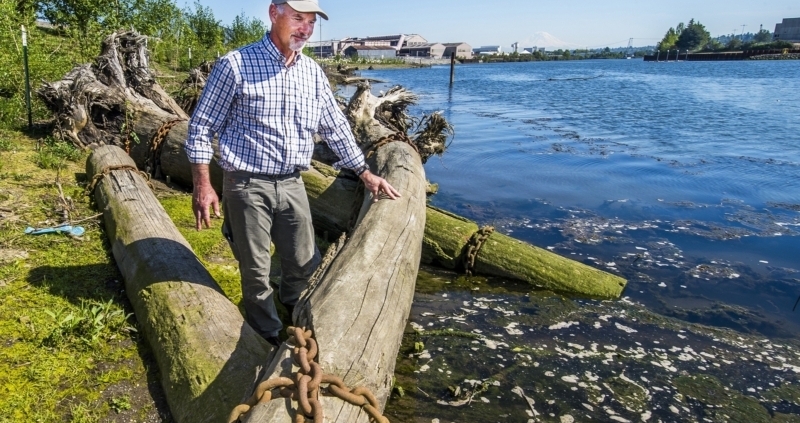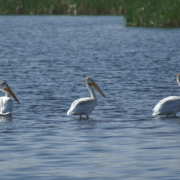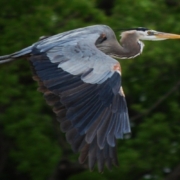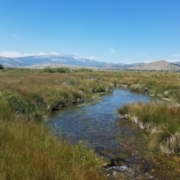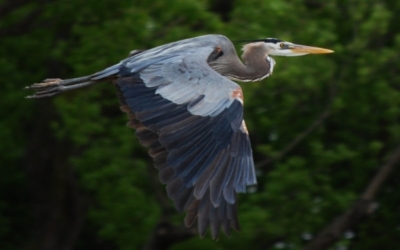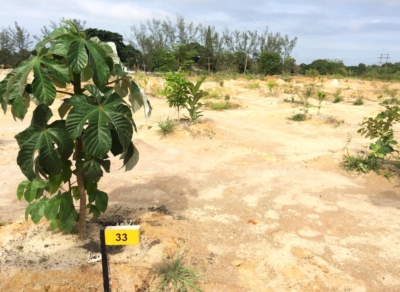Boeing | Bringing the Salmon Back to the Duwamish River in Seattle
Salmon are an important source of nutrients for many species, including some endangered species like the southern resident orca. Millions of people rely on salmon as a healthy and reliable source of protein. Salmon presence is also an indicator of healthy aquatic ecosystems. Salmon migration runs push vast amounts of marine nutrients from the oceans to the waters of lower productivity rivers. As salmon disappear, the quality of ecosystems decreases. Seattle is just one example where critical salmon habitats are in decline, but one WHC member is working to change that.
The Boeing Plant 2 facility, located along the banks of the Duwamish River, was once used to manufacture planes before it was decommissioned for waste cleanup. The site now contains five acres of restored intertidal wetlands and riparian habitat, created as part of a federal and state order to restore the site for wildlife. The conservation project on the site includes cleanup efforts like dredging sediment and contaminated bank soils, and demolition of a building that extended over the waterway. Boeing used these cleanup efforts to transform nearly one mile of former industrial waterfront into vital habitat for salmon and other aquatic species.
Starting in 2012, Boeing removed nearly 700 contaminated creosote wood pilings, restored the shoreline, planted thousands of native plants, and added large woody debris, which provide refuge for fish, food for insects, and reduce excessive erosion. The restoration also created critical off-channel areas where juvenile salmon and other anadromous fish can rest, feed and acclimate to saltwater conditions during their migration from upriver freshwater habitat into the Puget Sound estuary.
Regular monitoring has revealed just how valuable this habitat already is to numerous fish species, particularly salmon. Boeing team member Monica Zimmer remarked that during a recent survey, “We counted over 7,000 Chum salmon and 260 Chinook salmon—a threatened species in Puget Sound—utilizing the embayment in just one tidal cycle!”
Typical of most large-scale conservation projects, there were challenges. Boeing struggled to protect the newly planted vegetation from Canada geese, which graze on young, tender plants and caused several areas to require replanting. The team tried several approaches to discourage the presence of geese with little success, including installing cardboard cutouts and 3-D models of predators. They also tried installing netting to prevent geese from landing, but this caused more problems by trapping debris and causing maintenance issues. The team finally determined that staffing and supervising the area with regular patrols during the geese’s key migratory periods was the best solution until the plants had grown enough that they could withstand occasional grazing.
Since first receiving WHC Conservation Certification® in 2016, the Boeing Plant 2 program has seen a very positive response from the community. Several organizations have participated in walking tours of the habitat, and community members can participate in an annual boat tour. These tours help to highlight Boeing’s habitat restoration work and promote the need for additional restoration projects of a similar nature along the waterway.
Related Content
- White Papers:
- Relevant President’s Blog or Wildlife Blog posts
- Project Guidances:
- Webinars:
Quick Facts
| Site Name: | Boeing Plant 2 |
|---|---|
| Category: | Member Spotlight |
| Tags: | Marine Intertidal, Remediation Member Spotlight |
| Site Location: | Seattle, Washington |
| Partners: | Amec Foster Wheeler Environment and Infrastructure, Inc., Dalton Olmsted & Fuglevand, Muckleshoot Indian Tribe, National Oceanic and Atmospheric Administration, Smayda Environmental Associates, Sound Native Plants, Suquamish Tribe, Teuful Landscape, U.S. Fish and Wildlife Service, Washington State Department of Ecology, Wingin' It Goose Control |
| Certification Since: | 2016 |
| WHC Index Link: | View Project |
